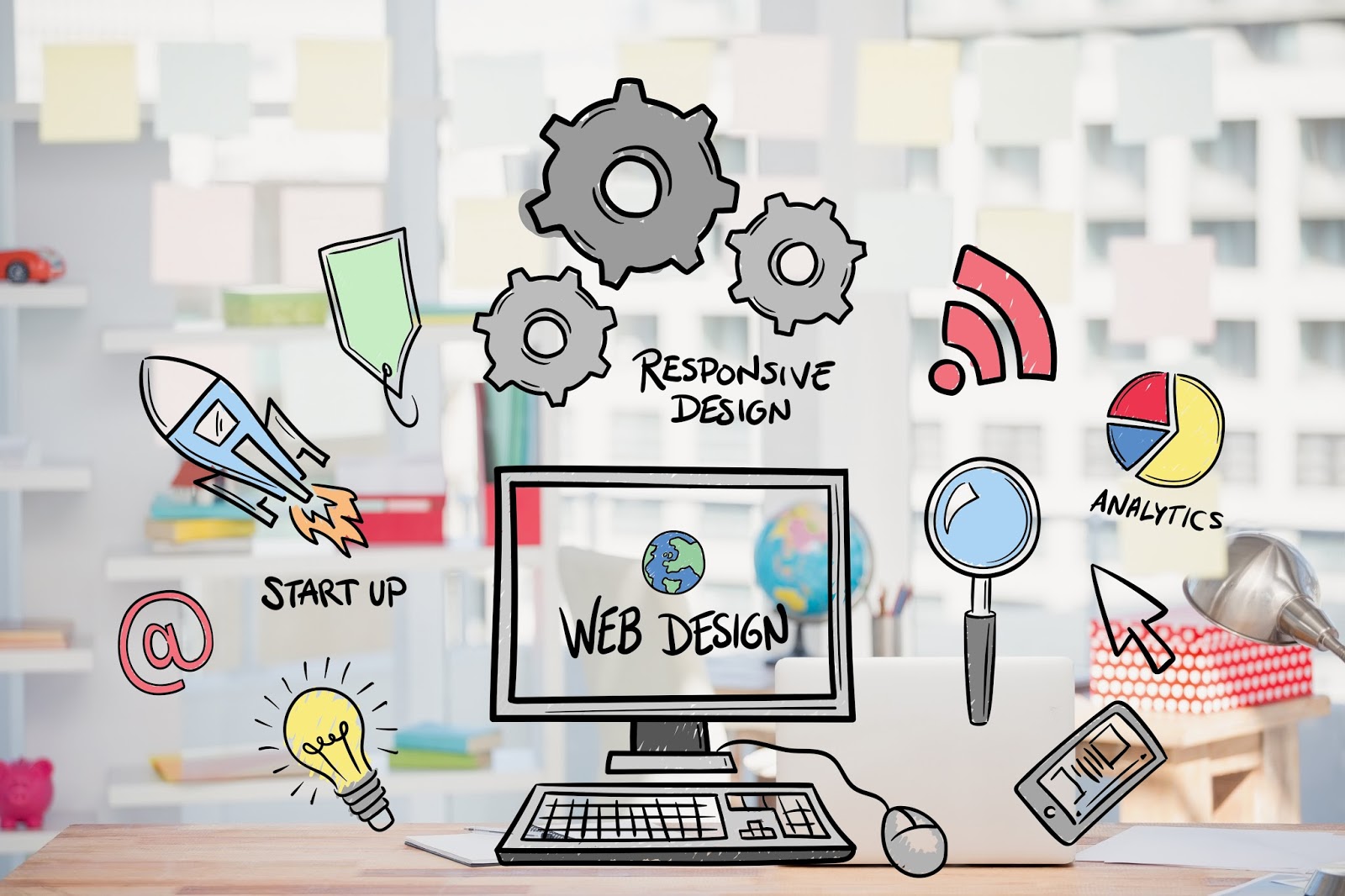Are you interested in becoming a Web Designer in 2023? Don’t know from where to start?
If so, you’ve come to the right place!
In this comprehensive guide, we will walk you through the step-by-step process of becoming a web designer in the dynamic and ever-evolving world of 2023. Whether you’re a beginner or have some experience in the field, this guide will provide you with the knowledge, skills, and resources you need to succeed.
So, let’s dive in and explore the exciting journey of becoming a web designer in 2023!
>> BONUS: How To Become A Software Developer In 2023: Step By Step Guide
Why Become a Web Designer in 2023?
Web design is an exciting and rewarding career choice for several reasons. First and foremost, it allows you to combine your creative talents with technical skills, resulting in visually appealing and user-friendly websites. With the proliferation of smartphones and other devices, businesses are focusing more on their online presence, making web design a highly sought-after skill.
Additionally, the flexible nature of web design work enables you to work remotely, choose your clients, and have control over your projects. As technology continues to advance, the need for skilled web designers will only increase, presenting you with abundant opportunities to grow and excel in this field.
What is Web Designing?

Web designing refers to the process of creating and designing websites and web pages. It involves the creation of visually appealing and user-friendly interfaces that reflect a company’s brand, convey information effectively, and provide an intuitive browsing experience for users. Web designers are responsible for organizing content, integrating interactive elements, and using various design elements to create layouts and style pages.
What is Web Designers Do?
Web designers are professionals who specialize in creating and designing websites. They play a crucial role in the development process, working on the visual aspects of websites to ensure they are visually appealing, user-friendly, and functional.
Web Designer: Roles & Responsibilities
Here is a comprehensive description of what web designers do:
Visual Design: Web designers are responsible for executing all visual design stages from concept to final hand-off to engineering. They conceptualize original website design ideas that bring simplicity and user-friendliness to complex roadblocks. They create wireframes, storyboards, user flows, process flows, and site maps to communicate interaction and design ideas.
User Experience (UX) Design: Web designers focus on creating amazing user experiences. They translate high-level requirements into interaction flows and artifacts, transforming them into beautiful, intuitive, and functional designs. They aim to enhance the overall user experience and ensure user satisfaction.
Graphic Design: Web designers possess demonstrable graphic design skills and a strong portfolio. They use graphic design software such as Photoshop, Illustrator, or other visual design and wireframing tools to create visually appealing elements for websites. They pay attention to details such as color schemes, typography, and visual imagery to maintain the appearance of websites and align them with branding requirements.
Collaboration and Communication: Web designers collaborate with clients, peers, and executive-level stakeholders to present and defend designs and key deliverables. They work closely with clients to understand their requirements and incorporate their feedback into the design process. Effective communication skills are essential for discussing design ideas and presenting design plans.
Problem Solving: Web designers are creative problem solvers. They tackle design challenges and find effective solutions to improve user experiences, address technical constraints, and meet client requirements. Their ability to think critically and creatively enables them to overcome obstacles and create innovative designs.
Web Designer: Skills & Qualifications
To become a successful web designer in 2023, you must possess a range of skills that will allow you to create engaging and functional websites. Here are some essential skills you need to develop:
- Design Principles: Understanding the fundamentals of design, including layout, color theory, typography, and composition, will help you create visually appealing websites.
- HTML and CSS: Having a strong foundation in HTML (Hypertext Markup Language) and CSS (Cascading Style Sheets) is crucial for structuring and styling web pages.
- Graphic Design: Familiarity with graphic design principles and tools will enable you to create compelling visuals, logos, and other graphics for websites.
- Responsive Design: With the increasing use of mobile devices, it’s essential to learn how to design websites that adapt to different screen sizes and resolutions.
- User Experience (UX) Design: Understanding user behavior, conducting usability testing, and creating intuitive interfaces are key components of delivering a positive user experience.
- Front-End Development: While not all web designers need to be proficient coders, having knowledge of front-end development languages such as JavaScript and frameworks like React or Angular can enhance your capabilities.
Where do Web Designers work?
Web designers can work in various settings, depending on their preferences and the specific needs of their clients or employers. Here are some common places where web designers work:
- Web Design Agencies: Many web designers find employment in specialized agencies that offer web design services to clients. These agencies often have teams of designers who collaborate on multiple projects.
- Freelance: Some web designers choose to work independently as freelancers. They can work from home or a dedicated workspace, taking on projects from clients on a contract basis. Freelancing offers flexibility and the opportunity to work on a diverse range of projects.
- In-house Design Departments:
- Digital Marketing Agencies:
- Software and Technology Companies:
- Educational Institutions:
- Government Agencies and Non-profit Organizations:
Step by Step Guide to Become a Web Designer

1. Learn Web Design Tools and Technologies
Start by acquiring foundational knowledge of web design theory. Understand concepts such as user experience, website structure, and color theory. You can learn web design theory through various methods such as attending web design courses, coding bootcamps, or online platforms like Coursera and DesignContest. These resources offer tutorials and courses that can help you grasp the fundamental principles of creating good websites.
>> Tip: Best Web Design Courses & Certifications 2023
>> Tip: Best Online Web Design Degrees 2023
HTML and CSS
HTML and CSS are the foundation of web design. HTML provides the structure and content of a web page, while CSS is used to style and format the elements. Learning these languages is essential for any aspiring web designer.
You can start learning HTML and CSS through online tutorials, interactive coding platforms, or books. Practice creating basic web pages, understanding the different HTML tags, and applying CSS styles to elements. Familiarize yourself with the box model, positioning, and responsive design techniques.
Popular Web Design Tools
In addition to HTML and CSS, web designers utilize various tools and technologies to streamline their workflow and enhance their design capabilities. Some popular web design tools include:
- Adobe Creative Cloud: Adobe Photoshop, Illustrator, and XD are widely used for graphic design, image editing, and creating website prototypes.
- Figma: Figma is a collaborative design tool that allows multiple designers to work together in real-time. It’s popular for its ease of use and powerful prototyping features.
- Sketch: Sketch is a vector-based design tool primarily used by Mac users. It offers an intuitive interface and extensive plugin support.
- InVision: InVision is a prototyping tool that enables designers to create interactive and animated prototypes for web and mobile projects.
Responsive Design and Mobile Optimization
With the increasing number of mobile users, it’s crucial for web designers to create websites that look and function well on different devices. Responsive design ensures that a website adapts to different screen sizes and provides an optimal user experience. Learning responsive design techniques and testing your designs on various devices is essential.
User Experience (UX) Design
User experience (UX) design focuses on creating websites that are intuitive, easy to navigate, and provide a positive user experience. It involves understanding user behavior, conducting user research, creating user personas, and designing user flows and wireframes. Tools like Figma and Adobe XD offer features specifically designed for UX design.
2. Master Graphic Design
Graphic design plays a vital role in web design by enhancing the visual appeal and communication of a website. Understanding graphic design principles and tools will enable you to create visually stunning websites. Some key graphic design concepts to learn include:
- Typography: Choose appropriate fonts, sizes, and spacing to ensure readability and convey the desired tone.
- Color Theory: Understand the psychology of colors, create harmonious color schemes, and use color to evoke emotions and guide user attention.
- Composition: Arrange elements on a web page in a visually balanced and aesthetically pleasing way. Learn about grids, alignment, and the rule of thirds.
Typography and Color Theory
Typography and color theory are two fundamental aspects of graphic design. In web design, selecting appropriate fonts and colors can greatly impact the overall look and feel of a website. Experiment with different font combinations and color palettes to create visually appealing designs that align with the client’s brand.
Image Editing and Optimization
Images play a significant role in web design. Learning how to edit and optimize images for the web is essential to ensure fast-loading websites. Familiarize yourself with tools like Adobe Photoshop and learn techniques to resize, compress, and optimize images without sacrificing quality.
3. Understand Front-End Development
While web designers primarily focus on the visual aspects of a website, having knowledge of front-end development languages can be beneficial. Understanding how HTML, CSS, and JavaScript work together will enable you to create more interactive and dynamic web experiences.
JavaScript and jQuery
JavaScript is the most widely used programming language for web development. Learning JavaScript will allow you to add interactivity and dynamic features to your designs. Additionally, jQuery, a JavaScript library, provides a simplified approach to common tasks and animations.
Version Control with Git
Version control is essential for managing and tracking changes in your web design projects. Git is a widely used version control system that allows you to collaborate with other developers, revert changes, and maintain a history of your project. Familiarize yourself with basic Git commands and workflows.
4. Build a Portfolio
A strong portfolio is crucial for showcasing your skills and attracting potential clients or employers. As a web designer, your portfolio should include a variety of projects that highlight your creativity, problem-solving abilities, and understanding of design principles. Include case studies, wireframes, mockups, and the final website designs to demonstrate your process and expertise.
Creating an Impressive Portfolio Website
Your portfolio website itself is an opportunity to showcase your design skills. Create a visually appealing and user-friendly website that reflects your personal brand. Use your design knowledge to create an engaging layout, attention-grabbing visuals, and easy navigation. Ensure your portfolio website is responsive and optimized for different devices.
Collaborate and Network
Collaboration and networking are crucial in the web design industry. Join online design communities, attend local meetups or conferences, and connect with other designers and professionals. Collaborating with others can expand your knowledge, provide valuable feedback, and open doors to new opportunities.
5. Stay Updated and Continuously Learn
To stay up to date with the latest web design trends, technologies, and best practices, follow industry blogs and websites. Some popular web design resources include:
Regularly reading and engaging with these resources will help you stay informed about industry updates and gain insights from experienced professionals.
Attend Web Design Conferences and Workshops
Attending web design conferences and workshops is an excellent way to expand your knowledge, learn from industry experts, and network with like-minded individuals. Look for conferences and workshops happening both online and in your local area. Some notable conferences include:
Join Web Design Communities
Joining web design communities and forums allows you to connect with fellow designers, ask questions, share your work, and receive valuable feedback. Engage in discussions, participate in design challenges, and contribute to the community. Some popular web design communities include:
How to Become a Freelance Web Designer

Becoming a freelance web designer can be an exciting career choice that allows you to unleash your creativity while working on your own terms. A freelance web designer is a self-employed professional who designs and develops websites for clients on a project basis.
Unlike working for a design agency or a company, freelancers have the freedom to choose their projects, set their rates, and work from anywhere. They are responsible for the entire web design process, including creating layouts, selecting color schemes, integrating functionality, and ensuring a seamless user experience.
To pursue a career as a freelance web designer, simply follow the guide I’ve outlined above. Once you’ve acquired the necessary skills, you can explore freelance platforms and work as a web designer on a freelance basis.
>>Tip: Best Freelance Websites for Web Designers
Job Opportunities As a Web Designer
As a web designer, there are numerous online and offline job opportunities available to you. Here are some details and resources that can help you explore these opportunities:
Online Job Opportunities: You can find a variety of web designer jobs that can be done remotely or from home. Websites like Indeed offer job listings for remote web designer positions. You can visit their website at to search for available jobs. The listings provide information about job titles, required skills, experience, salary, and other relevant details.
>> Top: Remote Freelance Web Designer Jobs
Glassdoor: Glassdoor is another popular platform where you can search for online web designer jobs. It provides a comprehensive database of job listings, company reviews, salaries, and interview experiences. You can visit their website at to explore online web designer job opportunities.
Jooble: Jooble is a job search engine that aggregates listings from various job boards and career sites. You can find online web design jobs on Jooble by visiting their website and searching for relevant keywords. They provide a list of job vacancies along with descriptions and requirements. You can visit their website at to find web design job opportunities.
Web Designer Salaries
Indeed reports an average base salary of $3,834 per month for web designers in Singapore. This data is based on 299 reported salaries.
Glassdoor states that the average base pay for a web designer in Singapore is $3,000 per month. Additionally, the average additional cash compensation is $5,003, with a range from $2,700 to $10,000. These figures are based on 58 salaries submitted anonymously to Glassdoor.
Web Designer Salaries By Country
Here is a compilation of web designer salaries in various countries:
- United States: The annual salary for web designers in the United States is approximately $50,900.
- Japan: The annual salary for web designers in Japan is around $33,553.
- Australia: Web designers in Australia earn an average annual salary of about $52,717.
- United Kingdom: The annual salary for web designers in the United Kingdom is approximately $36,875.
- Italy: Web designers in Italy earn an average annual salary of around $21,745.
- Germany: The annual salary for web designers in Germany is about $45,108.
- France: Web designers in France earn an average annual salary of approximately $38,095.
- Switzerland: The annual salary for web designers in Switzerland is the highest among the countries mentioned, amounting to around $63,546.
- Singapore: According to the provided information, the average base salary for web designers in Singapore is S$33,308 per year in 2023.
Frequently Asked Questions About Becoming A Web Designer
What does a web designer do?
A web designer is responsible for creating and designing websites. They work on the visual aspects of a website, including layout, color schemes, typography, and graphics. They also consider user experience and ensure the website is user-friendly and accessible across different devices and browsers.
What skills are required to become a web designer?
Web designers should have a combination of technical and creative skills. Some essential skills include proficiency in HTML, CSS, and JavaScript for coding and front-end development. They should also have an eye for design, understanding of user experience principles, knowledge of graphic design software, and the ability to work with content management systems.
What education is needed to become a web designer?
While a formal degree is not always required, many web designers have a bachelor’s degree in fields like web design, graphic design, or computer science. However, it is possible to enter the field with self-study, online courses, and practical experience. Continuous learning and staying updated with industry trends is crucial in this rapidly evolving field.
How can I improve my web design skills?
Continuous learning and practice are key to improving web design skills. Consider taking courses or certifications in web design, attending workshops or conferences, and exploring online resources and tutorials. Building a portfolio of projects and actively seeking feedback from peers and professionals can also help refine your skills.
What career opportunities are available for web designers?
Web designers can work in various settings, including web design agencies, marketing departments, or as freelancers. They can specialize in specific areas such as user experience design, front-end development, or responsive design. Career advancement opportunities may include senior web designer roles, creative director positions, or even starting their own web design business.
Conclusion
Becoming a web designer in 2023 offers a promising career path filled with opportunities for growth and creativity. By following this step-by-step guide and continuously learning and improving your skills, you can embark on a successful journey in the web design industry. Remember to stay updated with the latest trends, build a strong portfolio, and network with other professionals.
Remember, this guide serves as a starting point, and your determination, passion, and commitment will be the driving forces behind your success. Best of luck on your journey to becoming a highly skilled and sought-after web designer! – Michael Diasz Kirindage



